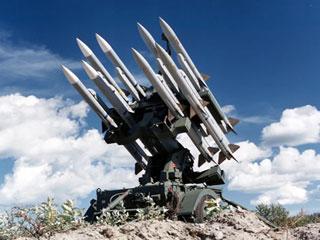
BRAHMOS supersonic cruise missile. A file photo.
NEW DELHI (PTI): BRAHMOS, the world's only supersonic cruise missile and a symbol of the India's military prowess has been billed to be "uninterceptable" for the "next 20 years", by none other than the "father of BrahMos" himself.
"The equivalent of BrahMos is yet to be built. And, in the next 20 years, it cannot be intercepted by an enemy," says Dr. A Sivathanu Pillai, scientist, and CEO and MD of BrahMos Aerospace sharing the vision for the future trajectory of growth for the iconic missile technology developed jointly by India and Russia.
Pillai, also Chief Controller (R&D), DRDO and hailed largely as the "father of BrahMos" mentions "missile technology" as one of the 10 key and "unique leap-frog technologies" for building a securer and greater future of India, "driven by youth power" in a new book which he has co-authored with former Indian President Dr. A P J Abdul Kalam.
Titled "Thoughts for Change: We can Do It", by two renowned scientific minds aims to be a clarion call to the youth of India to "reclaim its ancient scientific wisdom" even as it exhorts them to embrace and work towards building a future where "multiple technologies will intersect and interoperate".
"We take pride in the fact that BRAHMOS, world's only supersonic cruise missile, a symbol of Indo-Russian co- operation, where India provided the guidance, avionics, software and airframe components, etc, has been successfully delivered to both the Indian Navy and the Indian Army and the aerial version for the Indian Air Force too shall be ready in few years time," Pillai said in an interview.
BRAHMOS, developed jointly in a strategic partnership between Indian DRDO (Defence Research and Development Organisation) and Russian NPO Mashinostroyeniya, is a stealth cruise missile with a range of 290 km and travels at a speed of Mach 2.8 to 3.
The name BRAHMOS is a portmanteau formed from the names of two rivers, the Brahmaputra of India and the Moskva of Russia.
Among other technologies that the authors believe will lay the roadmap for the future of war theatres and health care, etc, in India is the convergence of Information, Biotechnology and Nanotechnology (nano-info-bio).
Other technologies in the list include - Robotics, Artificial Intelligence and Cognitive Sciences; Sensor Technology; Materials Technology; High Energetics; Fusion Technology; Space Technology; Hypersonics and Green Technology.
"Nano-info-bio and their convergence will redefine the future as we know it, whether in changing the dynamics of the war theatre where information technology will be coupled with the existing biotechnology and the new and emerging field of nanotechnology or health care. A simple looking bird flying in the air could be a surveillance and reconnaissance device.
"As per health, drug delivery through nano tech has been tried on Parkinson's Syndrome and Epilepsy patients outside India and has shown to stop their symptoms like shaking of limbs and has even allowed them to walk, not possible otherwise. And, it is definitely a future India is looking to, given its huge youth bank," says Pillai.
Divided into five sections, the book in fact lays a special emphasis on the youth power, especially in the final section titled 'Future India' where it asks the young India to "think big" and to "assume the leadership role" in building a "knowledge society" for the world.
 Previous Article
Previous Article Next Article
Next Article












The Indian Air Force, in its flight trials evaluation report submitted before the Defence Ministry l..
view articleAn insight into the Medium Multi-Role Combat Aircraft competition...
view articleSky enthusiasts can now spot the International Space Station (ISS) commanded by Indian-American astr..
view article